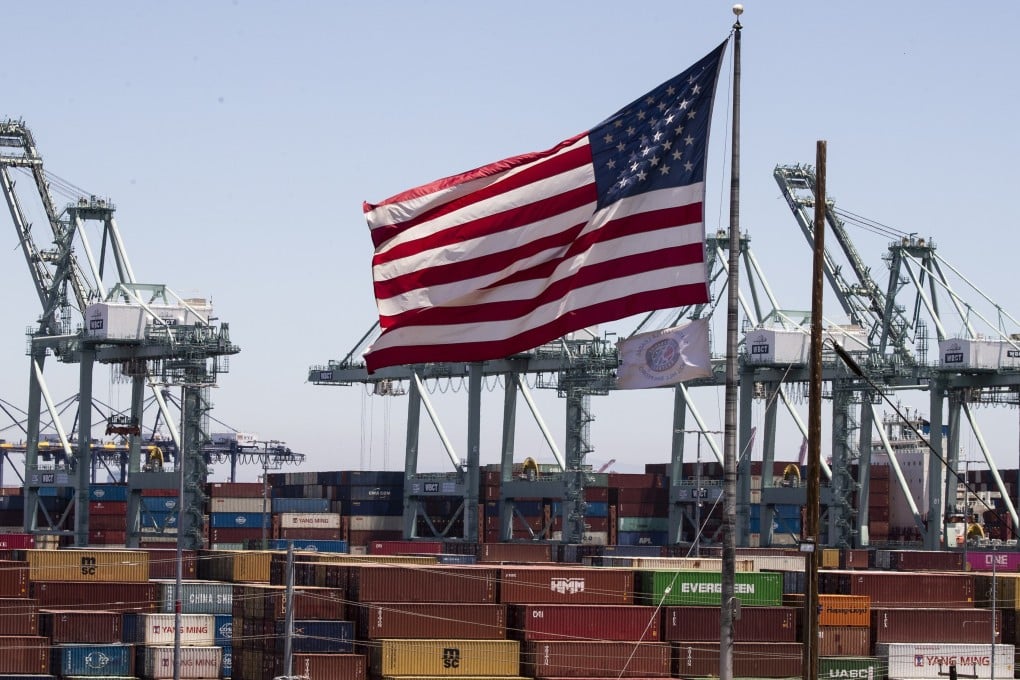Did Trump's China Tariffs Hurt The US Economy? A Look At Inflation And Supply Chains

Table of Contents
The Intended Impact of Trump's China Tariffs
The Trump administration implemented tariffs on Chinese goods with several stated goals: to level the playing field for American businesses, reduce the US trade deficit with China, and force China to negotiate more favorable trade deals. The administration argued these tariffs were necessary to protect American industries from unfair trade practices.
- Reduce the US trade deficit with China: The core argument was that imposing tariffs would decrease the amount of goods imported from China, thereby narrowing the trade gap.
- Encourage domestic manufacturing and job creation: The expectation was that increased costs on Chinese imports would make domestically produced goods more competitive, leading to increased manufacturing and job growth in the US.
- Force China to negotiate more favorable trade deals: The tariffs were used as leverage in trade negotiations, aiming to secure concessions from China on issues such as intellectual property protection and market access.
These goals were articulated in numerous statements by President Trump and officials within his administration, often emphasizing the need for a more "fair" and "reciprocal" trading relationship with China. However, the economic reality proved far more nuanced.
The Impact on Inflation
One significant consequence of Trump's China tariffs was an increase in inflation. Tariffs directly increase the cost of imported goods, and these increased costs are often passed onto consumers through higher prices. This effect was particularly pronounced in sectors heavily reliant on Chinese imports.
- Tariffs directly increase the cost of imported goods: The tariffs themselves added a percentage to the price of goods imported from China, making them more expensive for American businesses and consumers.
- Increased cost passed onto consumers: Businesses facing higher input costs due to tariffs often absorbed some of the increase, but much of it was passed down the supply chain, resulting in higher prices for consumers.
- Impact on specific sectors: Sectors like consumer electronics, furniture, and apparel, which rely heavily on imports from China, experienced significant price increases.
Data from the Bureau of Labor Statistics (BLS) shows a correlation between the implementation of tariffs and increased inflation rates during the period. However, it's crucial to acknowledge that other factors, such as global supply chain disruptions and increased energy prices, also contributed to the overall inflationary environment. Analyzing the specific impact of tariffs requires careful econometric modeling to isolate their contribution.
Inflationary Pressure on Specific Industries
The inflationary pressure from tariffs wasn't uniform across all industries. Some sectors experienced more significant impacts than others.
- Steel and aluminum industries: Tariffs on these materials initially led to price increases, benefiting domestic producers but harming downstream industries reliant on these inputs.
- Consumer goods sector: Price increases in various product categories were observed, particularly those with a high percentage of imported components from China. This disproportionately affected lower-income households with less disposable income.
- Impact on small businesses: Small businesses, with less negotiating power and smaller margins, were particularly vulnerable to the increased costs imposed by the tariffs, facing challenges absorbing these increased expenses without passing them along to consumers or compromising their profitability.
Disruptions to US Supply Chains
Trump's China tariffs also caused significant disruptions to established US supply chains, leading to delays and shortages. The complexities of global trade were highlighted as companies scrambled to adapt to the new trade landscape.
- Increased transportation costs: Companies sought alternative sourcing locations, leading to increased transportation costs due to longer shipping distances and increased logistics complexities.
- Delays in receiving goods: The shift in sourcing and the added bureaucratic hurdles associated with navigating new trade routes resulted in delays in receiving crucial goods.
- Companies shifting production: Many companies were forced to relocate or diversify their production away from China, incurring substantial investment costs and facing challenges in establishing new supply chains.
The Long-Term Economic Consequences
The long-term economic consequences of Trump's China tariffs are still unfolding and are subject to ongoing debate among economists. However, several potential lasting effects are apparent.
- Effects on long-term economic growth: The increased costs and supply chain disruptions likely had a negative impact on long-term economic growth, although the precise magnitude remains a topic of research.
- Impact on US competitiveness: While intended to bolster American industries, the tariffs may have reduced US competitiveness in the global market by raising input costs for American businesses.
- Lasting influence on trade relations with China: The tariffs strained US-China relations, creating lasting uncertainty and tension in the bilateral trade relationship.
Conclusion
Assessing the overall economic impact of Trump's China tariffs is complex, requiring consideration of multiple interacting factors. While the tariffs aimed to reduce the trade deficit, protect American industries, and improve trade negotiations with China, the evidence suggests that the unintended consequences—increased inflation and supply chain disruptions—were significant. The extent to which the stated goals were achieved remains debatable, with economic models offering varying conclusions. Further research and analysis are needed to fully understand the lasting impact on long-term economic growth and US global competitiveness. We encourage you to further examine the economic impact of Trump's China tariffs and continue the debate on the effectiveness of trade protectionism and its implications for the US economy. Analyzing the long-term effects of Trump's China tariffs on the US economy remains a crucial task for economists and policymakers alike.

Featured Posts
-
 Capital Summertime Ball 2025 Tickets Your Step By Step Buying Guide
Apr 29, 2025
Capital Summertime Ball 2025 Tickets Your Step By Step Buying Guide
Apr 29, 2025 -
 Your Guide To Buying Capital Summertime Ball 2025 Tickets
Apr 29, 2025
Your Guide To Buying Capital Summertime Ball 2025 Tickets
Apr 29, 2025 -
 Modificari Importante In Taxare In 2025 Ce Trebuie Sa Stiti
Apr 29, 2025
Modificari Importante In Taxare In 2025 Ce Trebuie Sa Stiti
Apr 29, 2025 -
 Missing British Paralympian Las Vegas Police Investigate Disappearance
Apr 29, 2025
Missing British Paralympian Las Vegas Police Investigate Disappearance
Apr 29, 2025 -
 Nyt Strands Game 422 Hints And Solutions For Tuesday April 29
Apr 29, 2025
Nyt Strands Game 422 Hints And Solutions For Tuesday April 29
Apr 29, 2025
